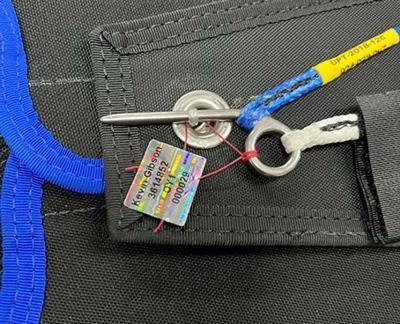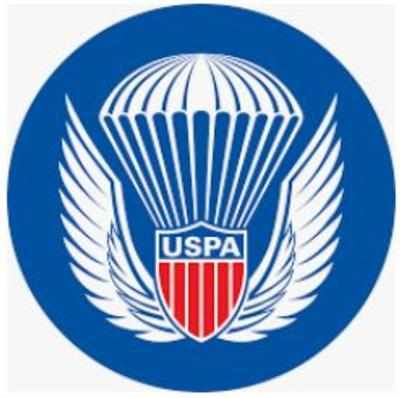Tue, Jun 18, 2024
Plastic, Mylar, and Paper Soon to be the Order of the Day in Rigging
The parachutists are getting rid of their old-school lead slugs while rigging up their chutes, now that the Parachute Industry Association has given some alternatives.

In February, the Association published Technical Bulletin TB-266, stating that they see "no impediment to immediate implementation of the use of the alternative means of sealing auxiliary or emergency parachutes explored by the Rigging Committee.” The results have been pretty nifty for those in the industry who maybe want to cut down on the amount of skin-to-lead contact in the course of their normal job. The frontrunners for replacements today? A type of pressure-sensitive paper seal, tamper-evident mylar, or a simple plastic plug. All appear to be finding fans of some sorts just as they have overseas - The EU got rid of their seals years ago, but some stateside have been hesitant to shake things up and go off-book when dealing with assiduously certified equipment. At the moment, manufacturers in the PIA Rigging Committee have expressed no reservations about updating their manuals to accommodate alternate seals, so future revisions should include the change.

Now, the USPA says riggers should be ready to see the new seas roll out, and they won't necessarily be as uniform as one may expect. In Technical Bulletin TB-266, the PIA said that lead, plastic, and paper seals are good to go provided they're equipped with the same 4.75-pound cotton break thread specified in most manufacturer instructions. The tying knot can be hidden and sealed inside using any of the methods, which should easily meet requirements in 14 CFR 65.133, since "After packing a parachute [the rigger] shall seal the pack with his seal in accordance with the manufacturer's recommendation for that type of parachute."
The USPA tapped its foreign members to figure out what's most popular, with riggers largely reporting little favor for any one particular type, aside from some plastic seals requiring more pressure than lead if using a traditional press. Custom-printed paper and seals readily available online even allow for more information than the required 3-character rigger’s seal symbol, such as the rigger’s name, certificate number, and a serial number to protect them from possible pencil packing.
More News
Secondary Radar/Radar Beacon (ATCRBS) A radar system in which the object to be detected is fitted with cooperative equipment in the form of a radio receiver/transmitter (transponde>[...]
Aero Linx: Australian Society of Air Safety Investigators (ASASI) The Australian Society of Air Safety Investigators (ASASI) was formed in 1978 after an inaugural meeting held in M>[...]
Make Sure You NEVER Miss A New Story From Aero-News Network Do you ever feel like you never see posts from a certain person or page on Facebook or Instagram? Here’s how you c>[...]
From 2023 (YouTube Edition): Barking up the Right Tree Australian-born, the Aeropup is a remarkably robust, fully-customizable, go-anywhere, two-seat, STOL/LSA aircraft. The machin>[...]
Also: New Amelia Search, B737 Flap Falls Off, SUN ‘n FUN Unveiling, F-16 Record Captain Sully Sullenberger, the pilot who saved 155 people by safely landing an A320 in the Hu>[...]
 ANN's Daily Aero-Term (07.12.25): Secondary Radar/Radar Beacon (ATCRBS)
ANN's Daily Aero-Term (07.12.25): Secondary Radar/Radar Beacon (ATCRBS) ANN's Daily Aero-Linx (07.12.25)
ANN's Daily Aero-Linx (07.12.25) ANN FAQ: Turn On Post Notifications
ANN FAQ: Turn On Post Notifications Classic Aero-TV: Of the Aeropup and its Pedigree
Classic Aero-TV: Of the Aeropup and its Pedigree Airborne 07.07.25: Sully v Bedford, RAF Vandalism, Discovery Moving?
Airborne 07.07.25: Sully v Bedford, RAF Vandalism, Discovery Moving?




